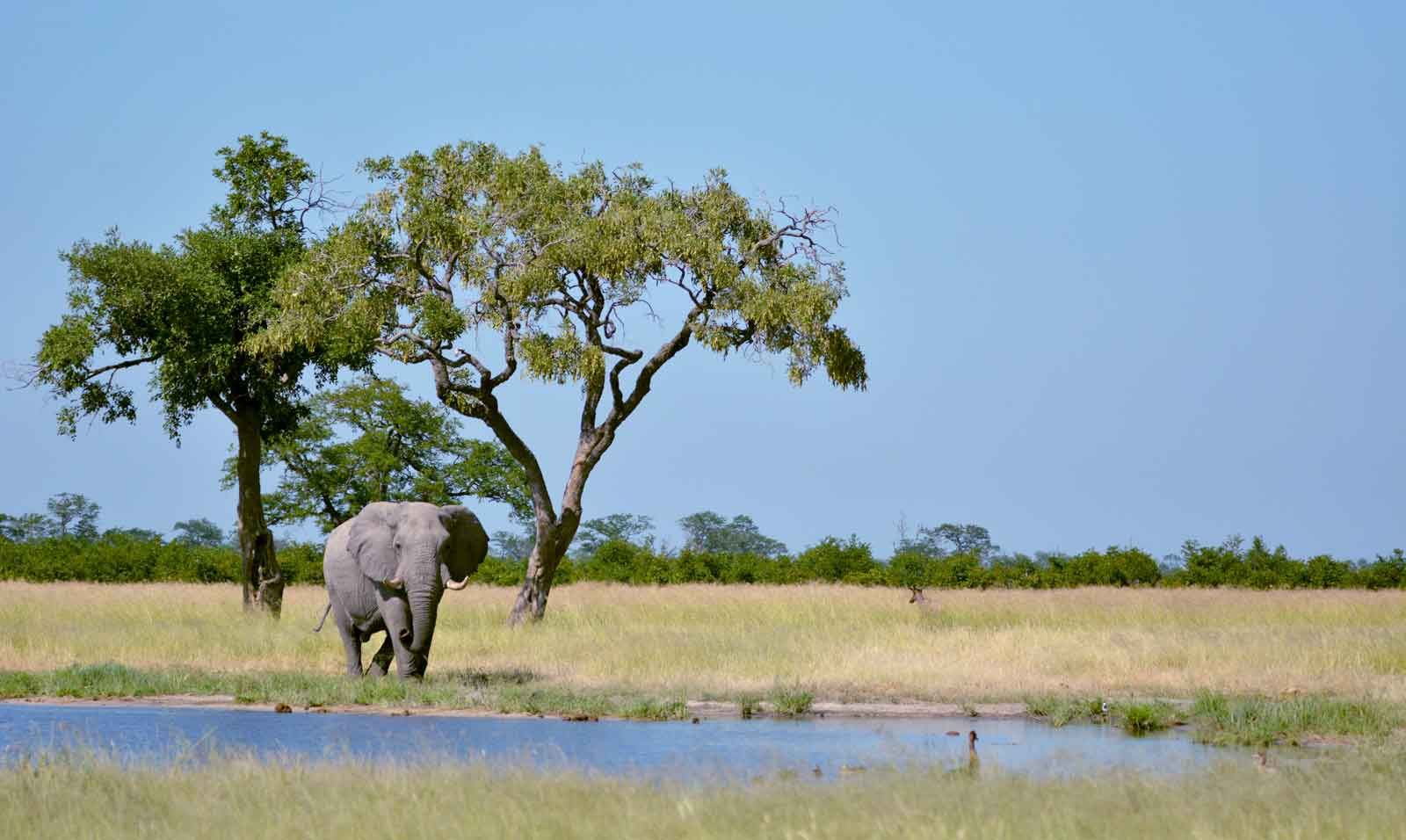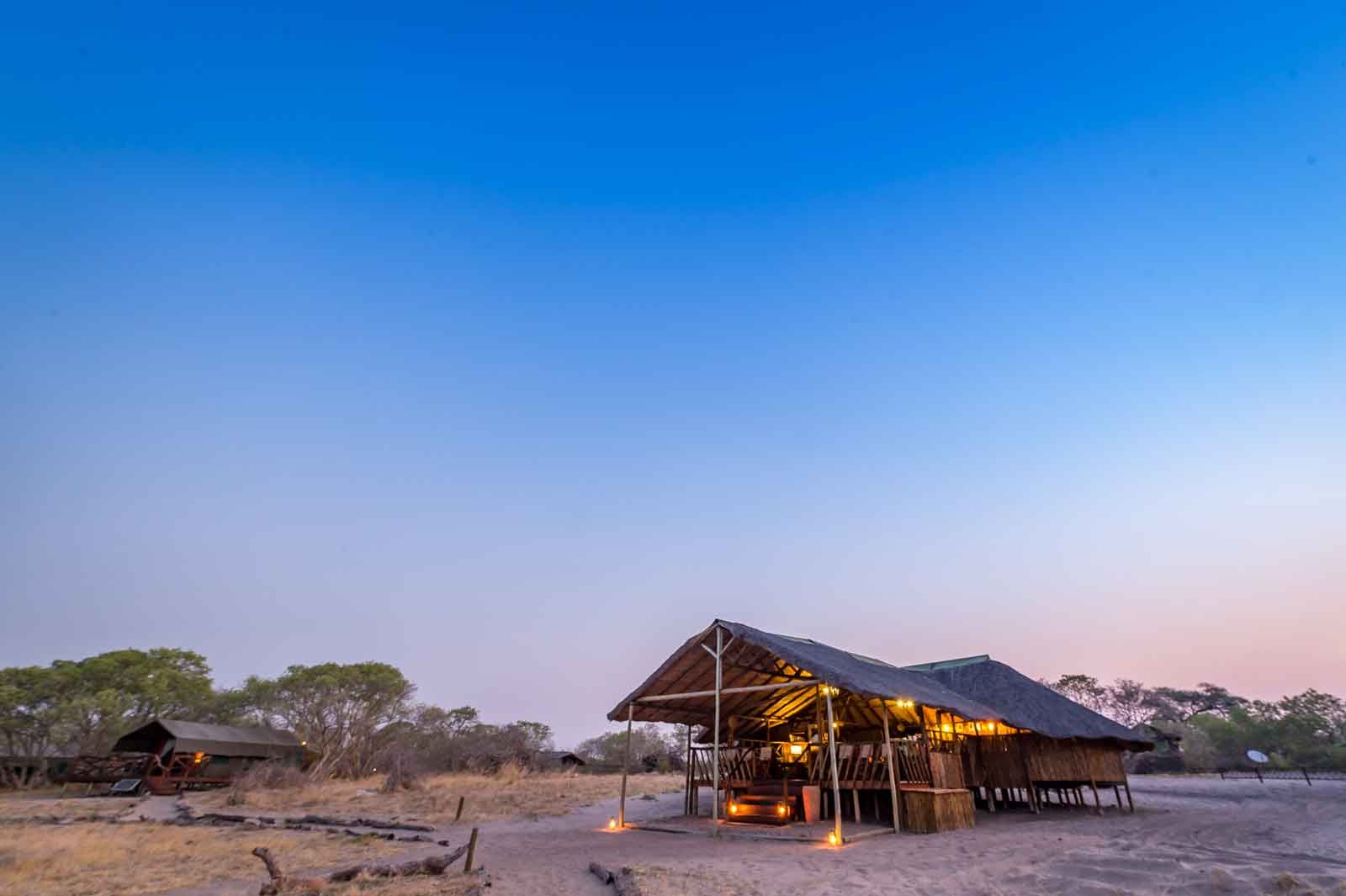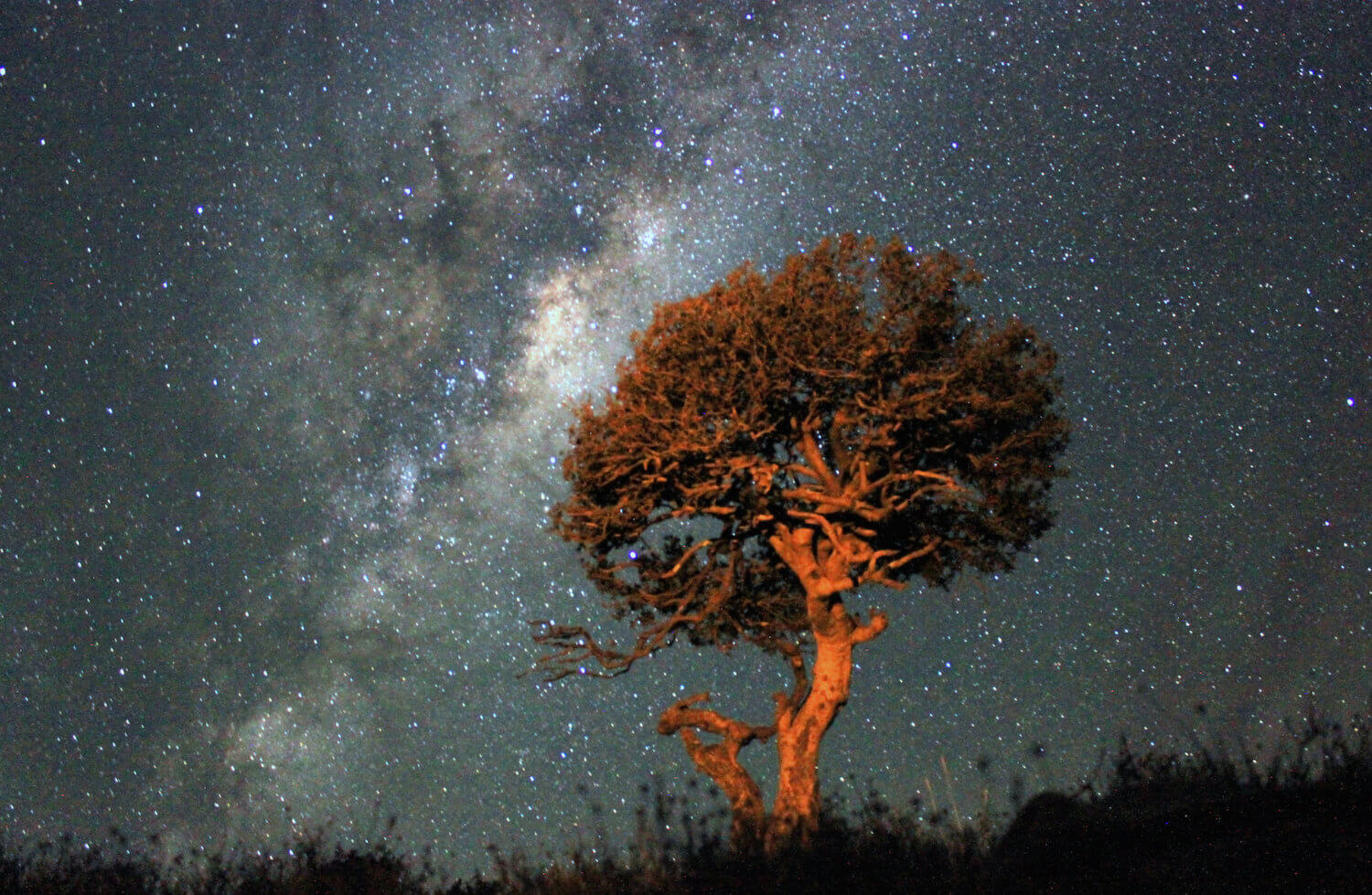ExperienceSafari In Unique Ways
Morning game drive: Mornings at Camp Savuti begin with an early wake up call and optional tea and coffee before heading out on game drive. During the winter months, the Savuti is very dry and the game species tend to stick to the remaining water sources, making it easier to spot them.
Evening game drive: Guests will embark on their second game drive in the late afternoon. There will be a drinks stop during evening game drive when guests can enjoy a refreshment (pre-ordered and packed by the guide) and spend a quiet moment in the Savuti Marshland watching the sun go down.
UniqueWildlife Experiences

DetailsUseful Info
The rainy season (November through until March) is wet but hot. Expect temperatures averaging 35°C to 40°C with night time temperatures averaging at 26°C. During the rainy season there are intermittent periods of dry weather.
The dry season (May to September) has an average day time temperature of 27°C. Night times are the coldest, with temperatures occasionally dropping below freezing.
The appeal of the Savuti is the lush land and the rich greenery of the rainy season that attracts a plethora of herbivorous animals. The best time to go is during November and December when herds of thousands of zebra migrate to the area to feed on the earth's new crop. This is one of Africa's greatest migrations, and the predators follow in high numbers and giving the Savuti its game-viewing reputation.
In the dry season before the rains, elephant, buffalo and other wildlife gather at the few remaining waterholes to keep hydrated, which also makes for superb wildlife moments. The temperatures can rise into the 40s (degrees Celsius) in September and October, but safaris are rewarding.
Seasons and climate will determine what sort of clothes one will need the most of, and the associated game-viewing conditions willdetermine what sort of camera equipment, wildlife reference books one might want to bring.
Botswana can get extremely hot, particularly in October just before the rains start. The African sun is scorching and we recommend bringing sun block and hats. Light, cool clothing is also necessary at this time of year, as is water-proof rain wear.
Cooler dry months are the coldest and it is recommended that guests wrap up for game drives with jackets and scarfs, but daytime temperatures are moderate throughout winter, so don't forget to pack short-sleeves too! Closed shoes are required for walking.
Binoculars are a good idea, as is a camera. This is a malarial area and mosiquitos are common in the hot, rainy months, so we recommend anti-malaria preparation.
Camp Savuti is all about its prime positioning on the Savuti Channel. It is an unfenced camp and receives regular wildlife visitors, and offers a diverse landscape ideal for game viewing. If you're lucky you'll notice elephants browsing the trees in camp, and birds flitting between branches, creating a game-viewing paradise right in front of camp.The experience at Camp Savuti can be described as camping in style. The tented suites are luxuriously adorned with carpeted floors, ample space, ensuite bathrooms and private verandas, but the wood, canvas and natural colours keep it in tune with the surroundings. Guests will feel relaxed and at ease with nothing but comfort and exclusivity in their Meru safari tents.
The Savuti landscape and ecology supports a wide array of plant, bird and animal life. During the rainy summer months is when the game flocks to the Savuti region.
What You'll SeeWildlife
The Savuti is one of the best regions in Africa to see the rare and endangered African wild dog. These canines live and hunt in packs and collectively, they are some of the most efficient hunters out there.
Lions are abundant in the Savuti. National Geographic filmmakers, Dereck and Beverly Joubert, have been filming lions and their behaviour in this area for over 2 decades. Years ago, Savuti lions formed huge prides and worked together to take down elephants as prey, and although this behaviour is not seen often any more, there is no telling what could happen in the wild.
Other frequently seen predators are hyena, cheetah, and leopard. Hyena are said to steal up to 20% of all lion kills, and it is well-documented that these two predators are 'eternal enemies'. Cheetahs are highly endangered and they are also very specialised hunters, while leopards are seen hoisting their prey into the trees.
The Savuti's location in the west of the Chobe National Park makes it a home to a great number of mammals. Most significantly, the Savuti boasts a population of elephants quite unlike any other.
There is an abundance of zebra during the rainy season that arrive in huge herds; and their sole purpose is to feast on the lush grasslands.
They are not the only ones seeking out the fresh, new grass, and are accompanied by an array of herbivores, like kudu, impala, wildebeest, warthog and hippo. These are only a few mentionables out of the wide variety of mammals, large and small, that are found in the Savuti.
The Chobe National Park as a whole boasts over 450 species of birds, both resident and migratory species. The Savuti Marsh is a 10 000 sq km area and alongside its rich wildlife population, the birdlife is very well represented.
Colourful flocks of carmine bee-eaters celebrate the rainy season and fly about in large numbers as game vehicles trundle through the long grass. Secretary birds with their long legs and quirky feathers strut along the ground and perch on top of trees; kori bustards can be seen and admired for their huge size; and thousands of red-billed queleas take off from tree tops in unison and cast shadows on the ground below them.
Ground birds like francolins and guinea fowls chirp noisily as they scuttle along, while an array other birds live in harmony in this unique biome.
Downloads
Find helpful information about rates, when to travel, wildlife you can expect to see and details about the accommodation.





























